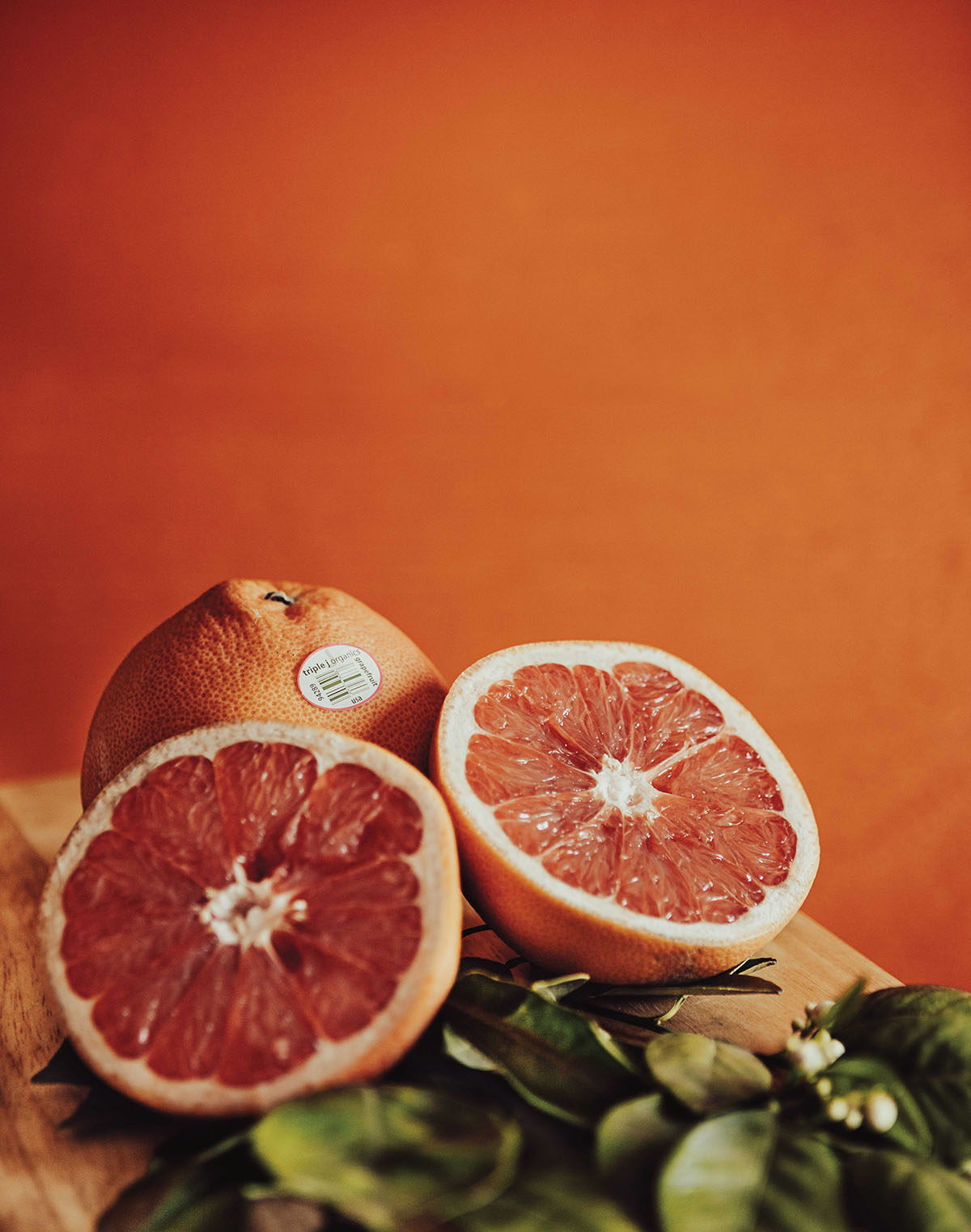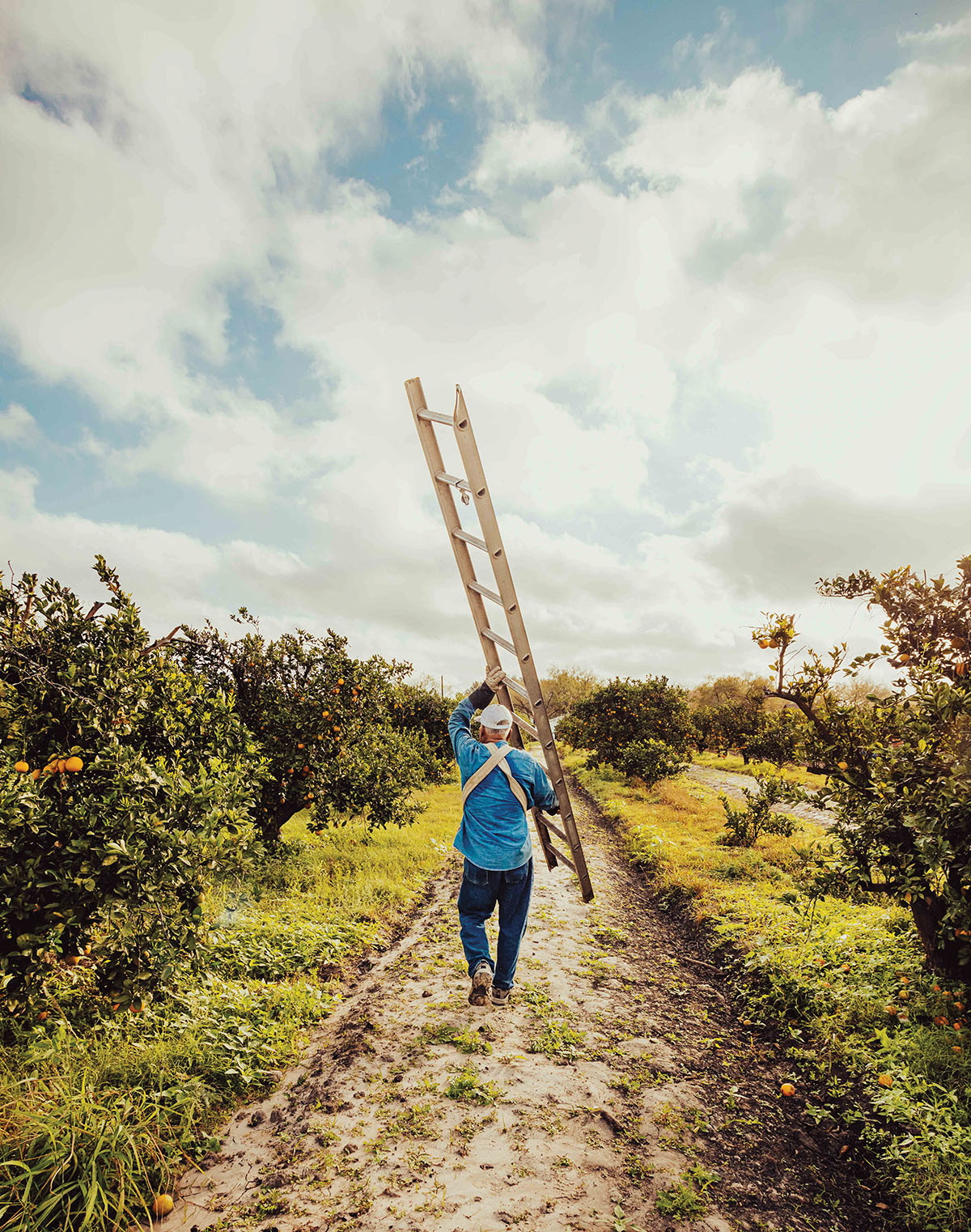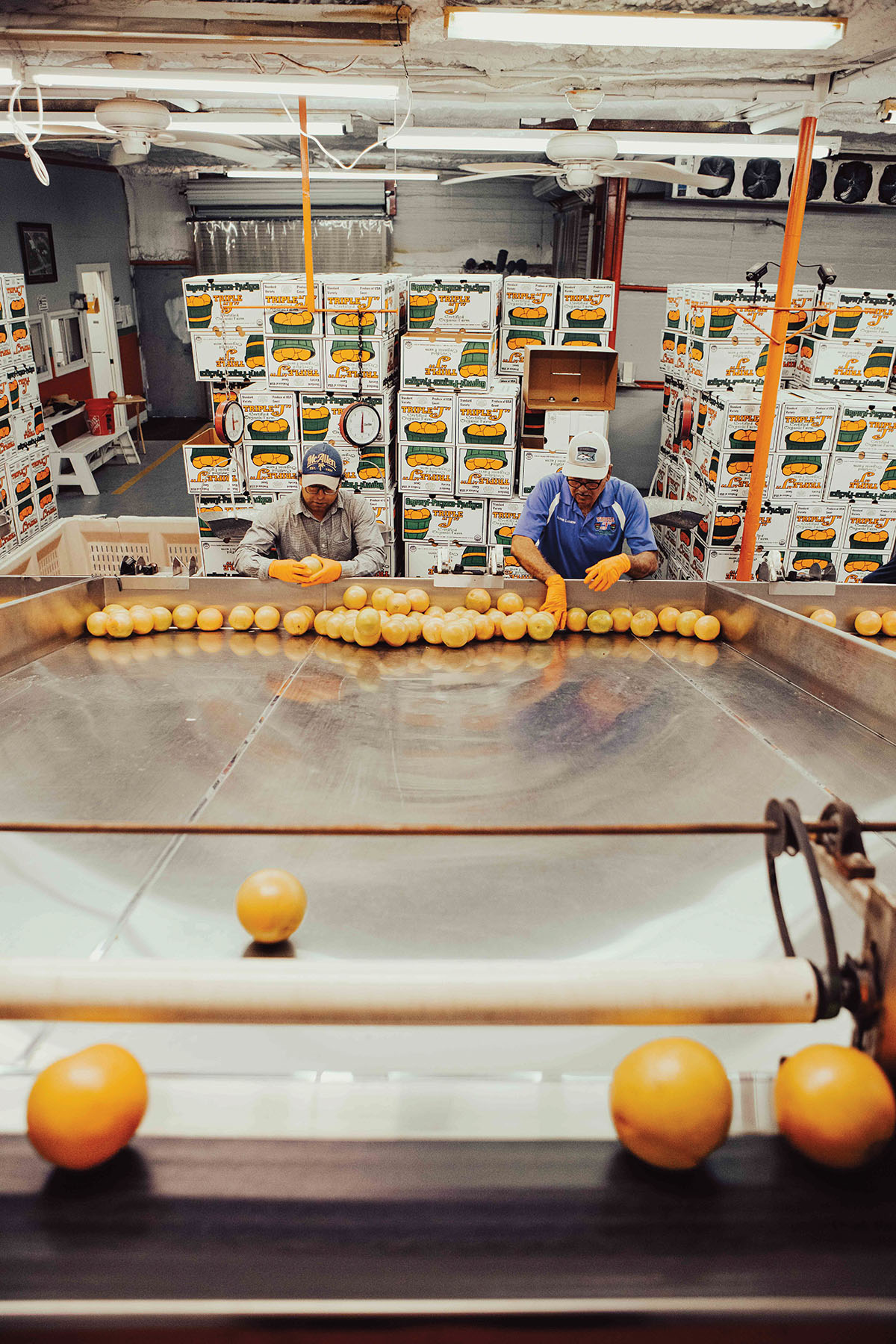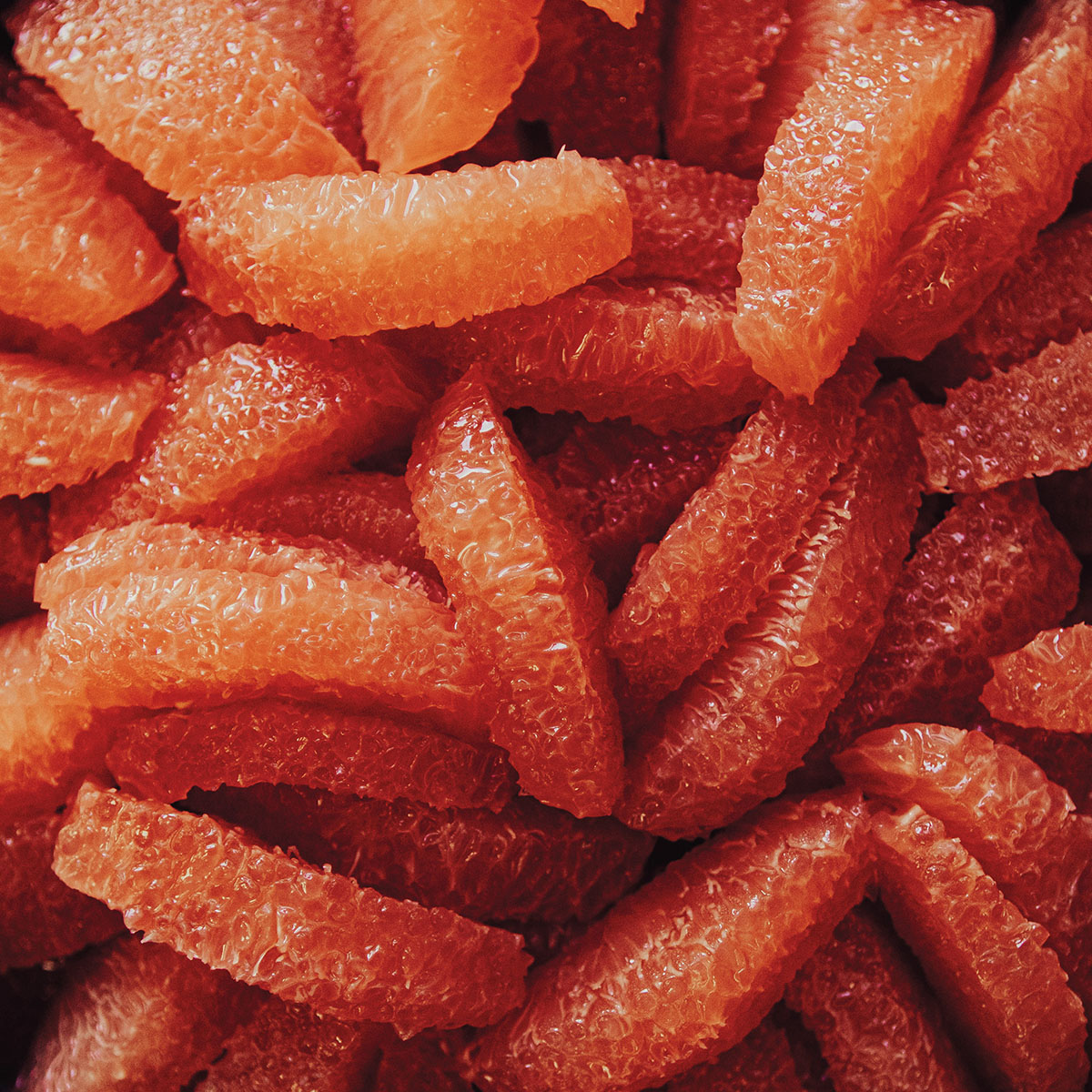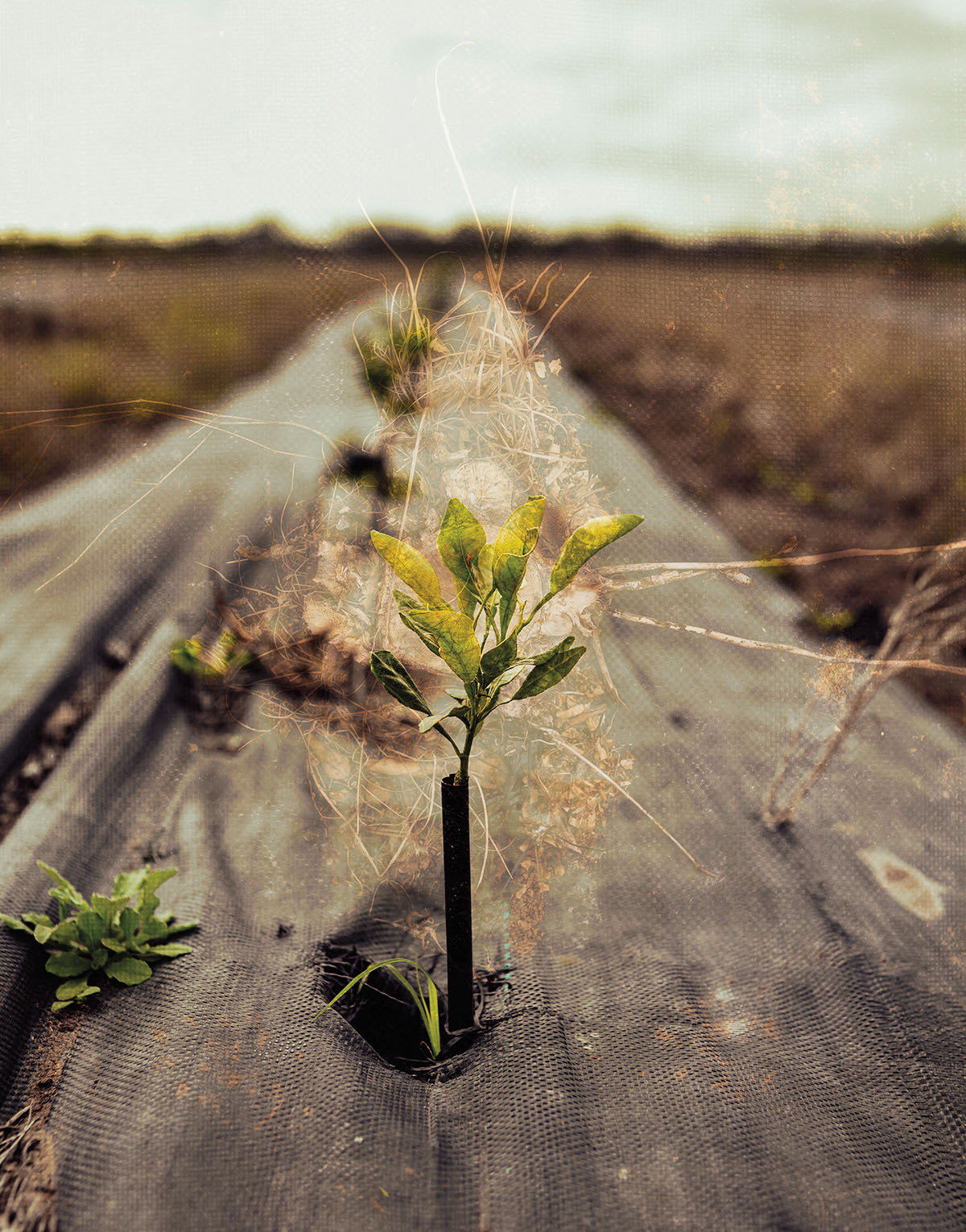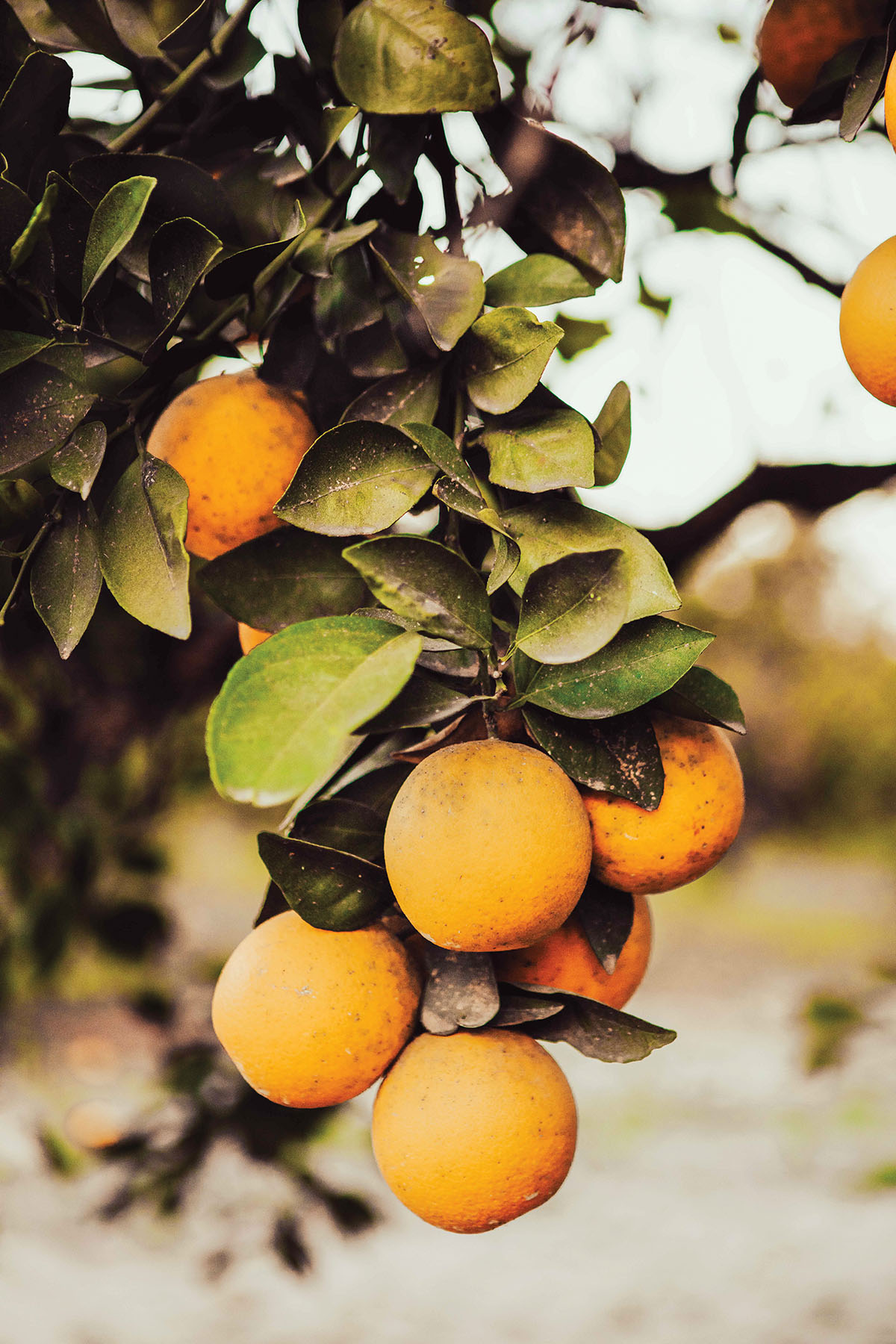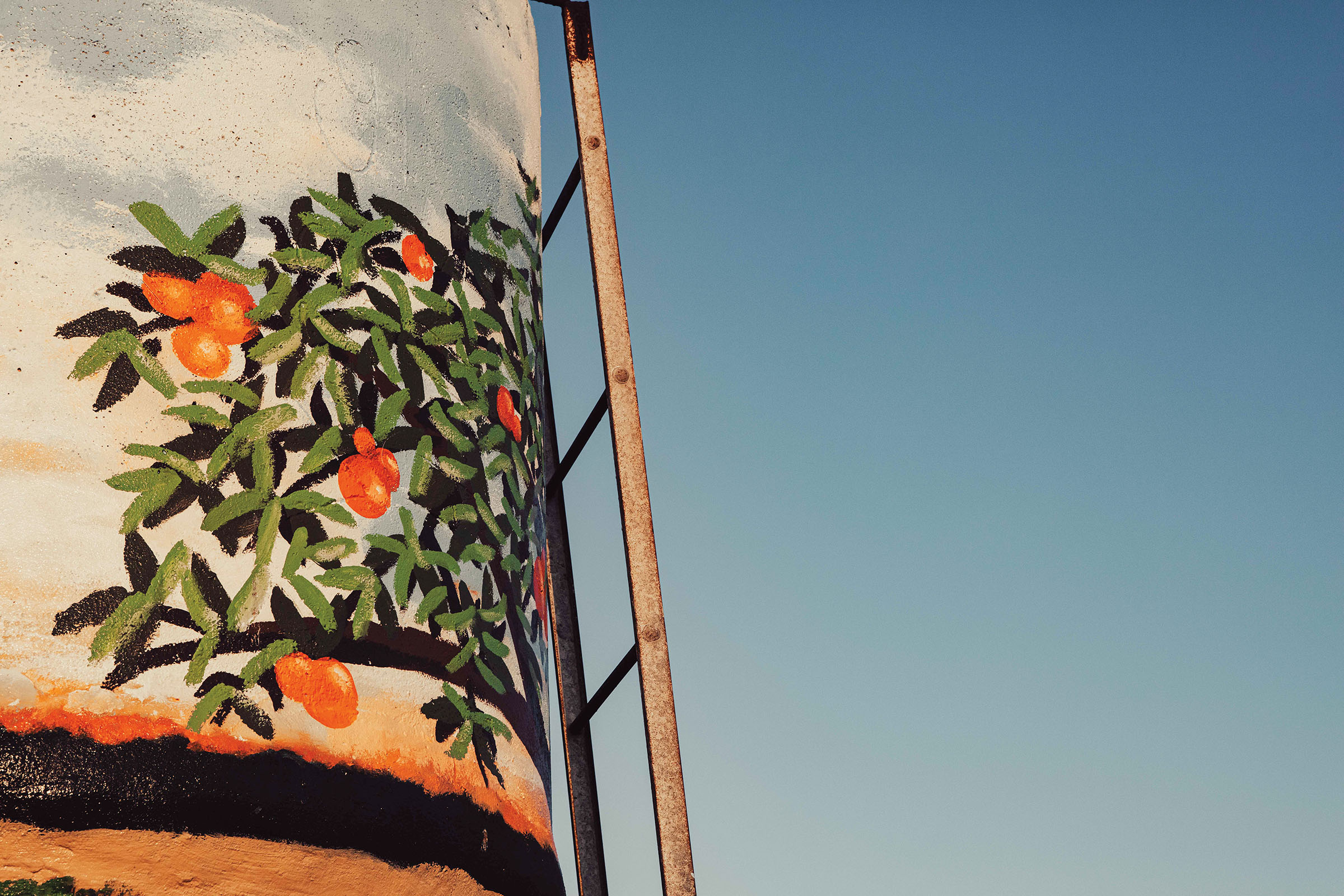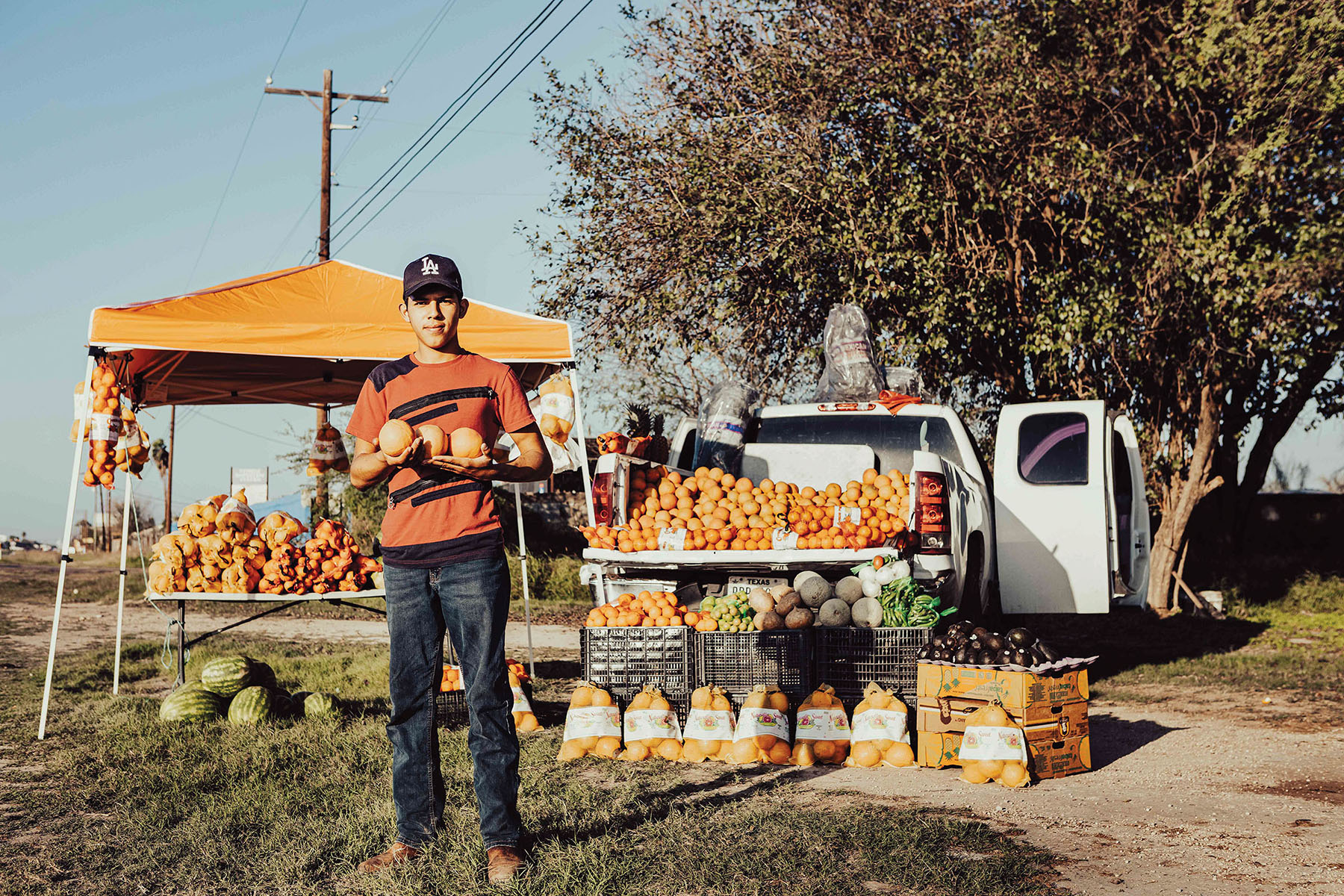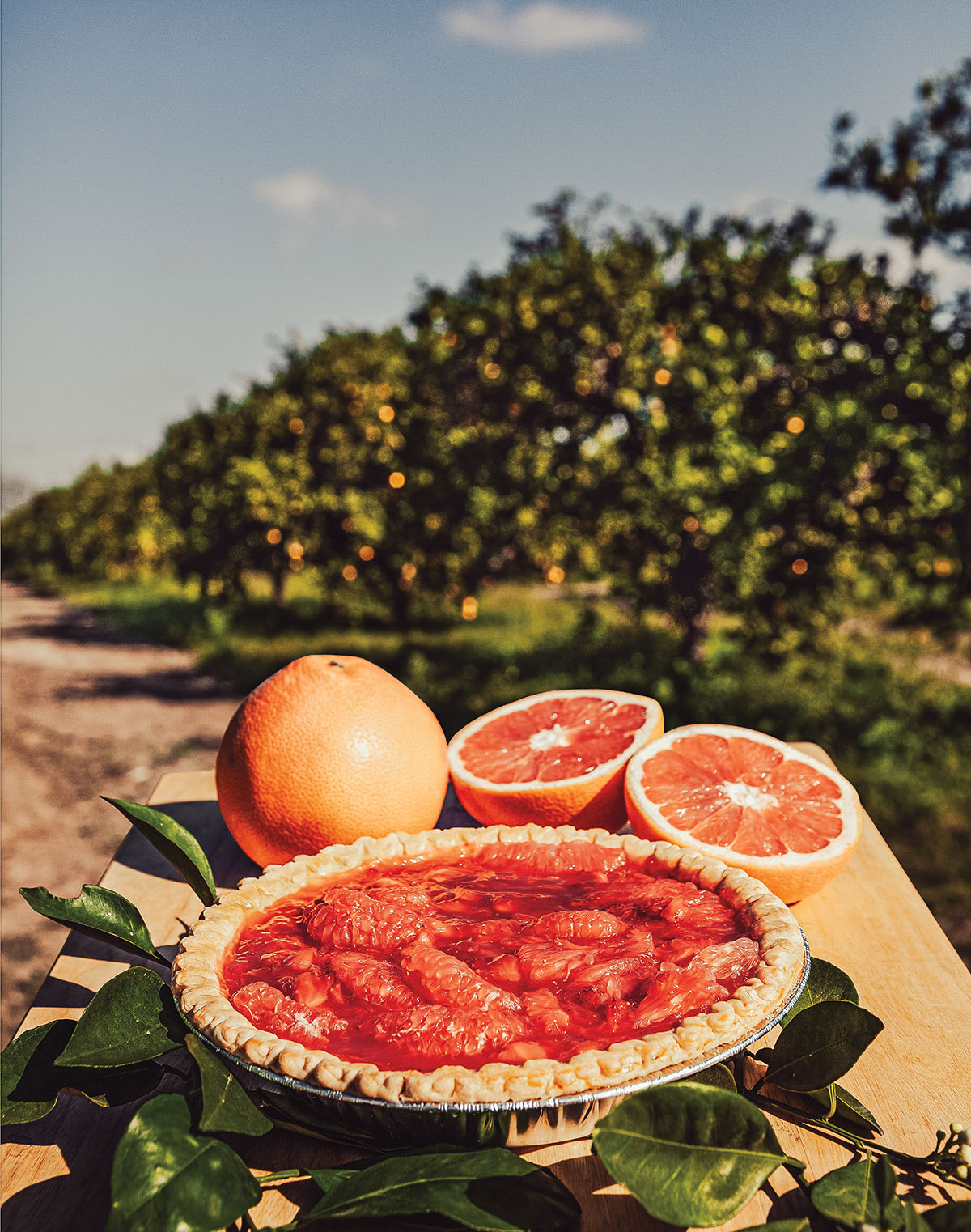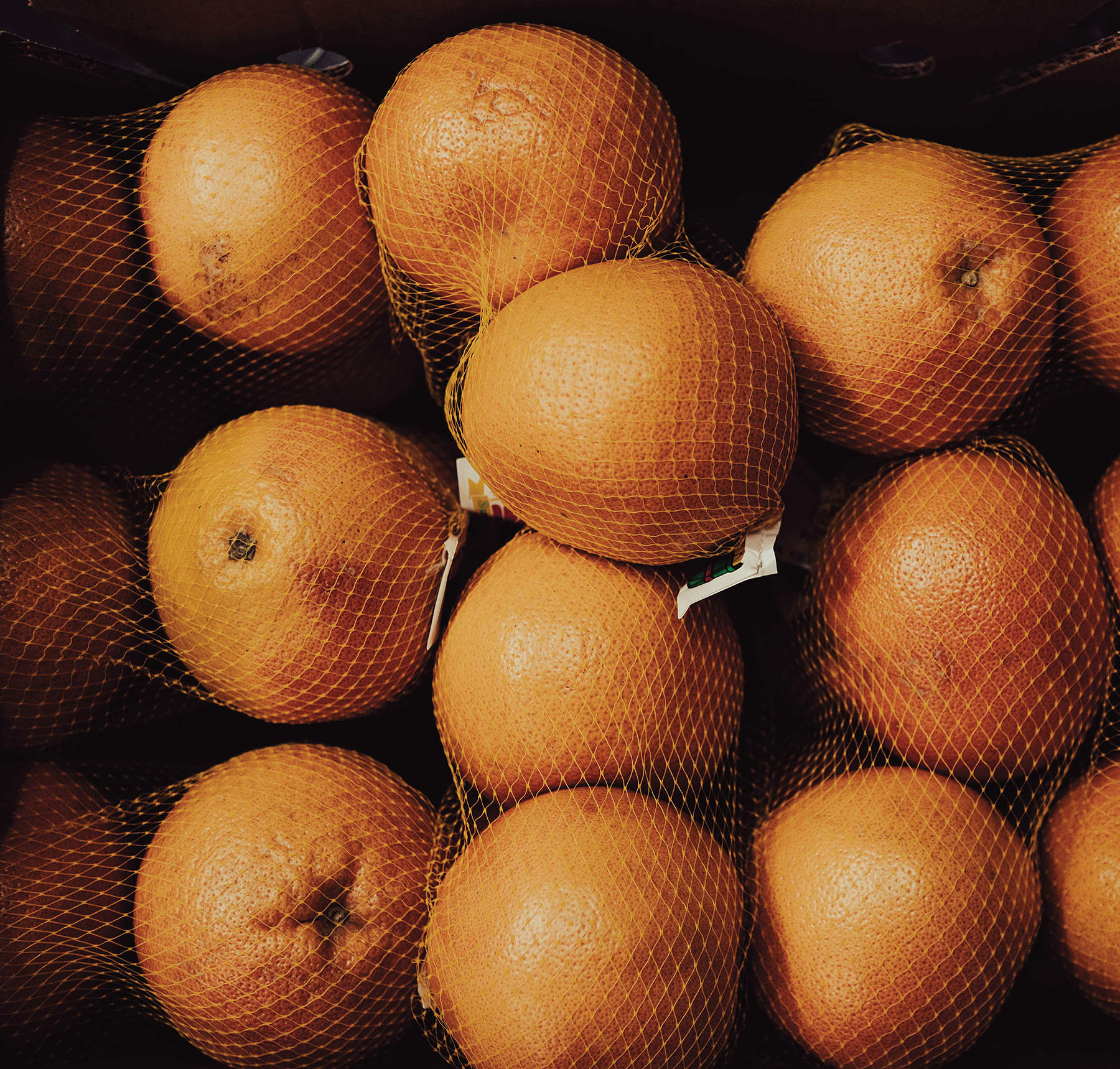Infinite Zest
The Rio Grande Valley is fertile ground for grapefruit, oranges, and other citrus
Jesse Lozano (left) owns and operates Triple J Organics, an 83-acre, family-run orchard in Mission that specializes in early-season oranges and ruby sweet grapefruits (first image).
Ruby red. Real red. Rio star. Ruby sweet. Rio red. South Texas grapefruit comes in a variety of evocative—some even trademarked—names. But the characteristics they all have in common is one of the first things I noticed when I moved to Texas almost two decades ago: their distinctive color and taste, unlike any grapefruit I’d encountered back home in Mexico.
Round and luscious and bright on the outside, plump and riveting and cardinal on the inside, grapefruits grown in the Rio Grande Valley are unabashedly sweet. No need to toss these wonders in honey to de-sour them as I did with the grapefruits I ate during my childhood, when my mom insisted on serving the lion king of the citrus world at breakfast. Who knows where those bland aberrations she got at the supermarket in my hometown of Toluca, 45 miles west of Mexico City and a galaxy away from citrus heaven, originated.
The Rio Grande Valley citrus industry—which mostly produces grapefruits and oranges—is more than a century old. The earliest record of citrus was seedling orange trees planted by Don Macedonio Vela at Laguna Seca Ranch in Edinburg in 1882, according to a report for the Texas Agricultural Extension Service by Julian W. Sauls, a horticulturist and citrus specialist at Texas A&M University’s Agricultural Research and Extension Center in Weslaco. The first ruby red grapefruits were discovered by accident in 1929, growing serendipitously in a Thompson pink grapefruit tree imported to the RGV from Florida. In 1934, the first variety of ruby red grapefruit was patented, opening a new chapter in the horticultural history of Texas.
Today, most Texas citrus is produced in three RGV counties—Cameron, Hidalgo, and Willacy—and distributed regionally. At the industry’s peak, in the 1940s, grapefruits and oranges were grown on over 100,000 acres in the RGV, Sauls notes. These days, the U.S. Department of Agriculture (USDA) approximates the full extension of the Texas citrus realm in fewer than 23,000 acres. Urban development around McAllen, Mission, and other border towns is an unrelenting foe of the orchards.
But nothing has impacted citrus production more than the freezes South Texas has experienced with enduring regularity since the industry’s inception. One extreme freeze alone, around Christmas in 1983, destroyed 70% of that season’s crop. Signs of the most recent severe freeze, in February 2021, are still visible in orchards across the RGV. Citrus production in the 2021-22 season was down 46% from the previous season, according to the USDA.
Growing up in El Paso, photographer Christ Chávez was oblivious to the existence of an entire field dedicated to growing citrus in his home state, down the same river—the same línea—where he’s always lived. All he knew was his mom had joined the legion of fanatics of the grapefruit diet when he was a kid, much like my mom did 1,200 miles south. In early January, Chávez set out on a journey to capture the spirit of citrus and its influence on life in the RGV.
He encountered fruit stands on the sides of roads, young vendors selling rotund bags of real red grapefruits and Marrs oranges from local orchards, and murals of orange groves decorating water tanks. He found costumes and hats tailored by local designers with actual fruits and leaves from the region for the Product Costume Show sponsored by the Texas Citrus Fiesta, a local organization founded in 1932 to promote the state’s citrus industry. He got a taste of ruby red grapefruit pie in all its tart and juicy glory—a regional dessert made with grapefruits and strawberries, though sometimes Jello-O is used, that graces many RGV tables in autumn. He was in awe of the grapefruits, oranges, kumquats, and Persian limes he spotted in the wild. “We’re so disconnected from the places our food comes from,” Chávez says. “I thought it was beautiful just seeing them hanging from the trees.”
He was reminded of the little huertita his maternal great-grandmother had when he was a kid. Around 6, Chávez would visit Grandma Flora during the summer in San Francisco del Oro, a small town almost 400 miles south of El Paso, in Chihuahua, Mexico. Little Christ would climb the fig trees Grandma Flora had planted in her little orchard and eat the dark, syrupy fruits right off the tree.
Chávez was drawn to the people behind the citrus fruits he captured in the RGV—the owners of family-operated orchards like Triple J Organics and US Citrus, who opened their groves to him. “We forget there are people who handle the food,” Chávez says. “That orange you’re eating—somebody touched it so it could get to the store, so you can eat it.”
—Antonio Ruiz-Camacho
Ron Skaria is president of US Citrus, a family-owned orchard in Hargill founded by Skaria’s father, Texas A&M professor emeritus and citrus pathologist Mani Skaria.
Lozano and Ramon Grabiel sort grapefruits at Triple J Organics.
Adeleide Rose De La Cruz, 5, models a dress and basket designed for the Texas Citrus Fiesta by her aunt, Yvonne Ayala, with dehydrated onions, orange leaves, grapefruits, and mesquite branches.
The vibrancy of the citrus grown in the Rio Grande Valley, apparent in real red grapefruit, is at stark contrast with the oftentimes extreme conditions it has to endure.
To represent this dramatic cycle of demise and rebirth, Chávez created a montage of a kishu mandarin sapling and a dried stump of a mandarin tree that didn’t survive the February 2021 freeze.
Marrs oranges grow in clusters at Triple J Organics.
The Mudar mural on a standpipe at Lark Boulevard and North 23rd Street in McAllen was created by artist Juan Silva as part of the Keep McAllen Beautiful campaign.
Street vendor Diego Ibarra sells seasonal fruit at various locations on Alton Boulevard in Palmhurst.
Sheila Lozano, Lozano’s daughter-in-law, makes grapefruit pie sourced from real red grapefruits grown at Triple J Organics. “The first bite was tangy with a fruity flavor,” Chávez says. “I was expecting something bitter, but it was smooth and refreshing.” The regional dessert, which is popular in the fall, is served cold. “This is the type of pie you’d want to eat right after a long bike ride, hike, or swim to cool you down.”
Real red grapefruits are bountiful at Triple J Organics
Pulp Pickins
Get juiced up at these spots in the Rio Grande Valley.
Texas Citrus Fiesta
220 E. 9th St., Mission.
956-585-9724; texascitrusfiesta.org.
View memorabilia and historical photos related to the RGV’s citrus industry.
Triple J Organics
14702 N. Trosper Road, Mission.
956-789-1966; triplejorganics.com.
Make an appointment to purchase fruit directly from the warehouse.
US Citrus
30232 FM 493, Hargill.
956-855-6029; uscitrus.com.
Saplings from the nursery are available for sale.
